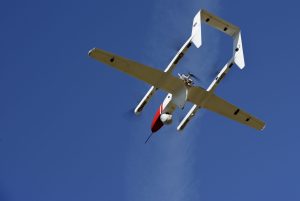Russia’s Record Drone Assault on Ukraine: A Turning Point in Modern Aerial Warfare
In the early hours of July 9, 2025, Russia executed its most extensive drone assault on Ukraine since the invasion commenced in 2022. This large-scale operation represents a significant intensification in the use of drones in warfare, drawing global attention from military experts and policymakers.
The Scale of the Attack: An Unprecedented Night
During the night offensive, Russia launched a total of 728 drones comprising both attack variants and decoys, accompanied by 13 missiles. This incident marked the highest recorded aerial threats on a single day, according to Ukrainian air force officials. Out of these, Ukraine successfully intercepted 711 drones and seven missiles. Despite these efforts, several areas such as Dnipro, Zhytomyr, Kyiv, Kirovohrad, Mykolaiv, Sumy, Kharkiv, Khmelnytskyi, Cherkasy, and Chernihiv still suffered substantial damage.
Main Targets and Human Toll
Lutsk, located in the Volyn region near Poland and Belarus, was identified as a primary target with approximately 50 drones and five missiles detected. Kyiv also faced attacks in its central districts, though most incoming threats were neutralized by air defenses. Tragically, some drones succeeded in breaching defenses, resulting in the deaths of at least five civilians in the eastern town of Rodynske and three in Kostiantynivka, with additional injuries reported in Kyiv and Brovary.
Strategic Timing Amid Diplomatic Efforts
President Volodymyr Zelenskyy referred to Russia’s onslaught as a deliberate move to undermine ongoing diplomatic peace efforts. This attack challenged international consensus and highlighted Russia’s commitment to military aggression despite potential for peace talks.
The Critical Role of Air Defense
The effective interception by Ukrainian forces underlines the enhanced capabilities of Ukraine’s air defense systems, bolstered by Western aid. However, President Zelenskyy continues to stress the urgent need for advanced air defense resources from allies to safeguard Ukrainian cities and civilians.
Drones: Modern Tactics and Technology
This attack illustrated evolving drone warfare tactics. Russia utilized a combination of Shahed-type drones and decoys to strain Ukrainian defenses. Such tactics aim to deplete valuable interceptor resources and increase the probability of successful hits by genuine attack drones.
Insights from Experts and Emerging Trends
Military analysts noted the unprecedented use of drone swarms to overwhelm defense systems, signifying a tactical shift from singular missile launches to more complex, large-scale assaults.
Geopolitical and Strategic Consequences
The magnitude of the attack has amplified Kyiv’s calls for enhanced air defense support and emphasized vulnerabilities in zones near active conflict. It coincided with European diplomatic meetings, underscoring how military developments shape global diplomatic and economic discourse.
The Human Element: Stories of Resilience
Ukrainian civilians spent the night in shelters, grappling with the psychological and physical toll of continuous conflict. Social media platforms became a conduit for sharing experiences and coping with the ever-present threat of attack.
The Broader Implications for Drone Warfare
This event has been a significant demonstration of the complexities of drone warfare: the balance of advancing defense systems with ever-evolving UAV technologies is crucial. It underscores the necessity of international support in bolstering Ukraine’s defenses and civilian morale. Observers globally will likely analyze this event for insights into future military strategies.













